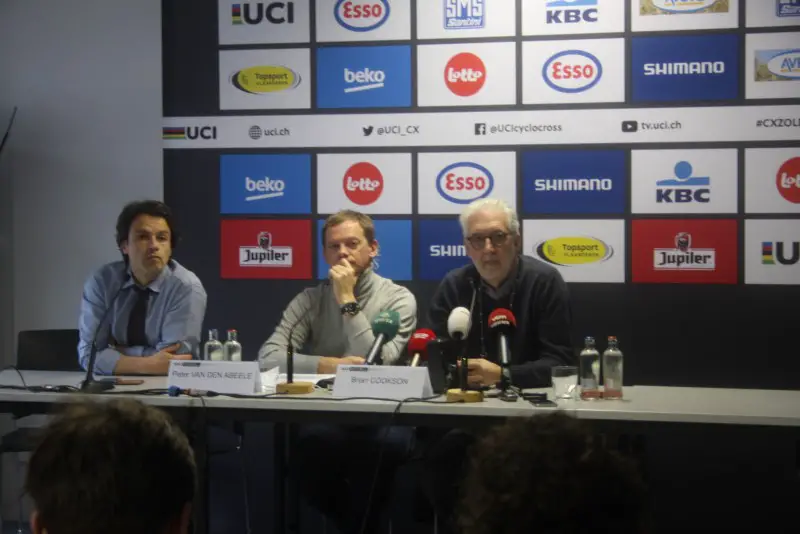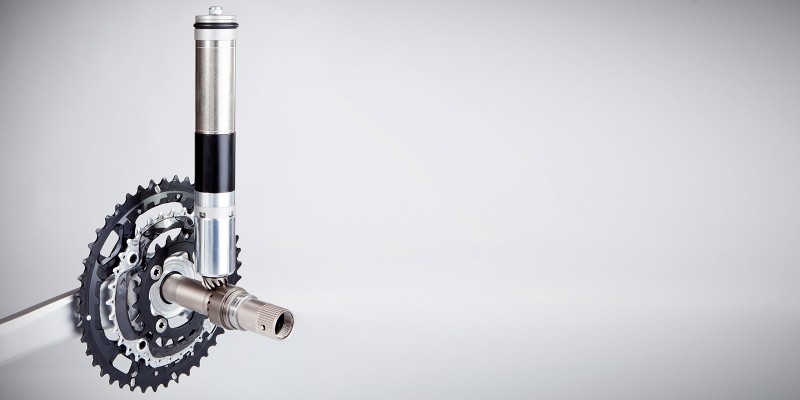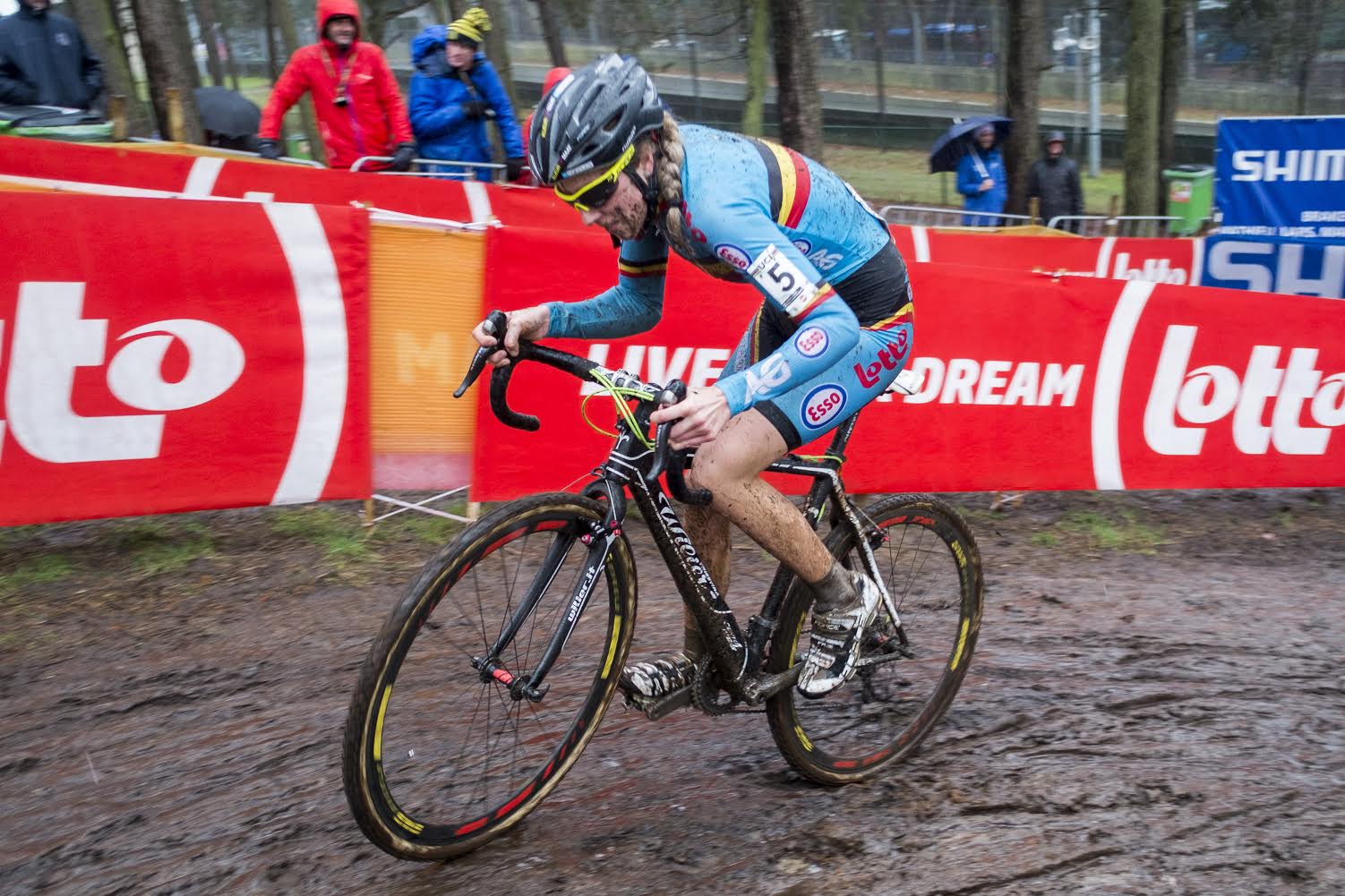The cycling world was rocked back in January when the UCI found evidence of a motor hidden within the bicycle frame of U23 Women’s racer Femke Van den Driessche during competition at the Cyclocross World Championships in Zolder, Belgium.

Van den Driessche immediately and emotionally denied knowledge of the derelict method of propulsion within her bike, but that didn’t stop the incident from developing into a drama of soap opera proportions – complete with family drama, bankruptcy, stolen parakeets and a fall guy. Details of the actual motor and how it was found were sparse, with the UCI staying mostly mum about specifics until now.
The UCI released a statement yesterday that shed some light on the incident, while also giving some more details on how the organization found the motor.

Last month, faced with the very distinct possibility of a lifetime ban from the sport and a very hefty fine, Van den Driessche made a statement that she planned on retiring from the sport. Instead of spending her own money to fight the accusations in Switzerland, Femke simply stepped away from professional cycling for good.

While it’s not clear she was actually present to contest the ruling, the UCI doled out a six-year suspension, retroactive to the start of last season, 11 October, 2015 – effectively disqualifying her from all of her results since that date. Additionally, Van den Driessche is also ordered to pay the UCI a fine of 20,000CHF (£14,100/$20,500/€18,200), plus all court costs relating to the decision.
As of the writing of this post, it’s not immediately clear if Van den Driessche is required by law (other than UCI rules) to pay the fine since she has left professional cycling for good.
Discovering the Motor

In the press release, the UCI further explains how it found the motor, what kind of motor it was, and that the organization tested many other bikes at Worlds back in January.
” The bike concerned was scanned using the new magnetic resonance testing deployed this year by the UCI. This detected the motor whilst the bike was in the rider’s pit area. The motor was a Vivax which was concealed along with a battery in the seat-tube. It was controlled by a Bluetooth switch installed underneath the handlebar tape.
Over 100 bikes were scanned at the event and this new method of testing has proven in trials to be extremely effective in locating hidden motors or other forms of technological fraud as it quickly detects motors, magnetic fields and solid objects concealed in a frame or components.”
Here’s the full press release from the UCI for your perusal.
The UCI announces Disciplinary Commission decision in the case of Femke Van den Driessche
26 April 2016
The Union Cycliste Internationale (UCI) today announces that its Disciplinary Commission has rendered its decision in the case of Belgian rider Femke Van den Driessche.
The UCI Disciplinary Commission issued the following decision:
- Ms Femke Van den Driessche is found to have committed a violation of art. 1.3.010 in combination with art. 12.013bis (Technological fraud) of the UCI Regulations;
- Ms Femke Van den Driessche is suspended for a period of 6 years starting from and including October 11, 2015 and ending on October 10, 2021;
- As a consequence of her suspension, all competitive results achieved by Ms Femke Van den Driessche from and inclusive October 11, 2015, shall be disqualified. Her name and results shall be removed from the concerned ranking lists and Ms Femke Van den Driessche shall no longer hold any corresponding title (notably Under 23 European Champion title and Under 23 Belgian Champion title);
- Ms Femke Van den Driessche is ordered to return the medals and the prize-monies she received in connection with the disqualified competitions to the respective organisers;
- Ms Femke Van den Driessche is ordered to pay to the UCI a fine in the amount of CHF 20’000;
- Ms Femke Van den Driessche shall pay the costs of the proceedings in an amount which will be determined in the full reasoned decision.
This decision follows the discovery of a concealed electric motor in one of the rider’s bikes during checks at the Women Under 23 race of the UCI Cyclocross World Championships in January 2016. The bike concerned was scanned using the new magnetic resonance testing deployed this year by the UCI. This detected the motor whilst the bike was in the rider’s pit area. The motor was a Vivax which was concealed along with a battery in the seat-tube. It was controlled by a Bluetooth switch installed underneath the handlebar tape.
Over 100 bikes were scanned at the event and this new method of testing has proven in trials to be extremely effective in locating hidden motors or other forms of technological fraud as it quickly detects motors, magnetic fields and solid objects concealed in a frame or components.
The UCI has tested bikes at many races in different disciplines this year (for example 274 at the UCI Track Cycling World Championships in London, 216 at the Tour of Flanders, 232 at Paris-Roubaix, 173 at the U23 Liège-Bastogne-Liège). It will continue to test heavily in all disciplines throughout the year.
UCI President Brian Cookson said: “We have invested considerable resources in developing this new and highly effective scanning technology and also in strengthening the sanctions applicable to anyone found cheating in this way. This case is a major victory for the UCI and all those fans, riders and teams who want to be assured that we will keep this form of cheating out of our sport.”
